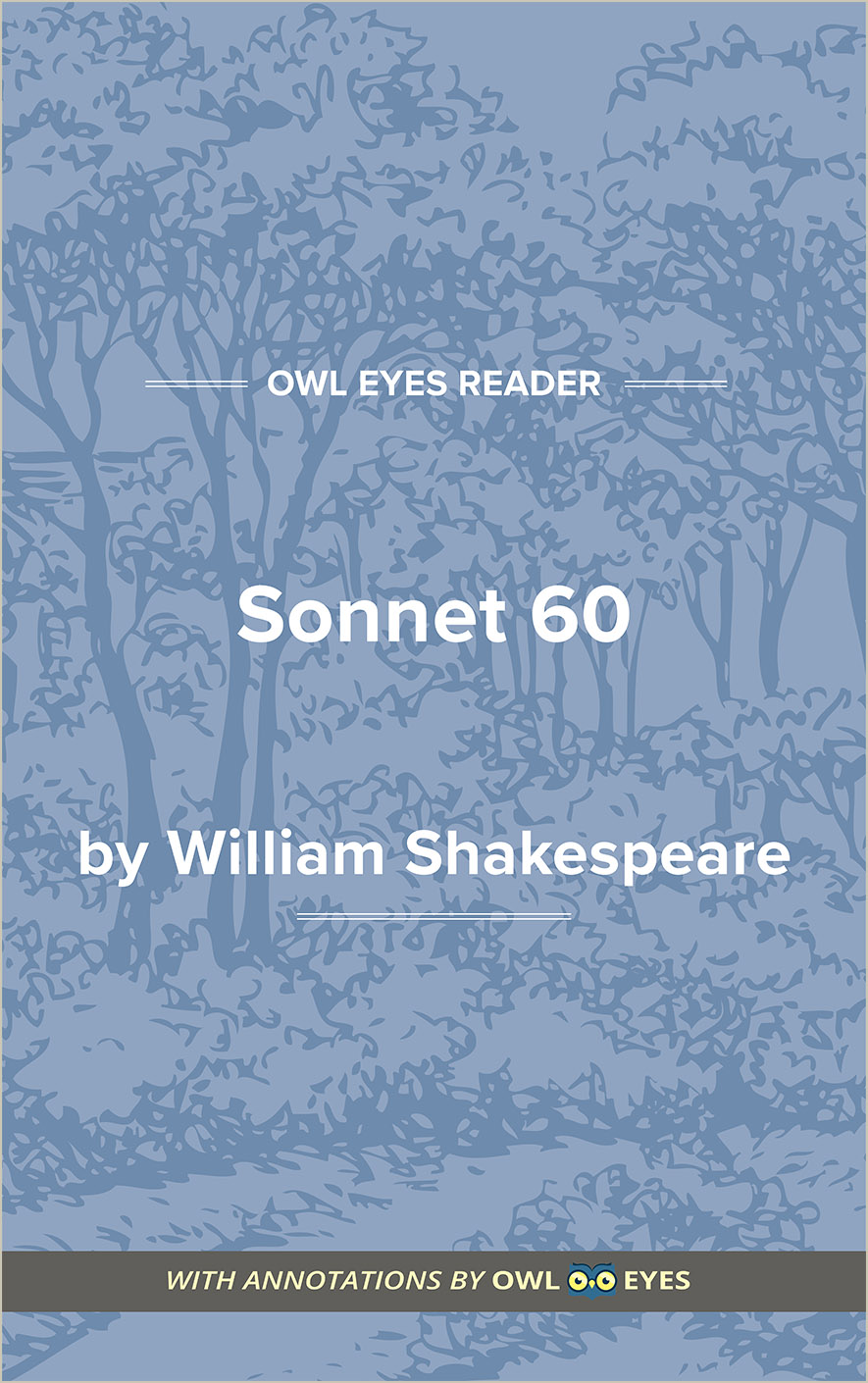- Annotated Full Text
- Literary Period: Renaissance
- Publication Date: 1609
- Flesch-Kincaid Level: 11
- Approx. Reading Time: 0 minutes
Sonnet 60
Sonnet 60 is a quintessential Shakespearean sonnet, expressing the form to near perfection. Each of the three quatrains is self-contained, and cultivates its own set of metaphors and images to describe the cycle of human life. The speaker takes a considerably different tone than he does in the other sonnets. He begins with the tranquil image of waves crashing on the shore and likens it to people approaching the end of their lives. The second quatrain meditates on the life cycle of a man, mixing natural images and the Christ narrative. The speaker uses the birth and crucifixion of Christ to suggest that all beings, even the purest among us, are subject to the ebb and flow of time. True to the form, the final quatrain marks a thematic shift, and returns to the drama of Time demolishing youth. However, the speaker relates this tragedy in a resigned tone, discussing youth in the abstract rather than his beloved youth. In the final couplet, the speaker reiterates his claim that the poem can protect the youth from Time. But here the speaker only “hopes” that his poem will be successful rather than confidently asserting his power to thwart Time. Not until the final phrase in the final line of this poem, after the youth has reentered the picture, does the speaker begin to once again use contentious language that reproaches Time’s effects.
- Annotated Full Text
- Literary Period: Renaissance
- Publication Date: 1609
- Flesch-Kincaid Level: 11
- Approx. Reading Time: 0 minutes

